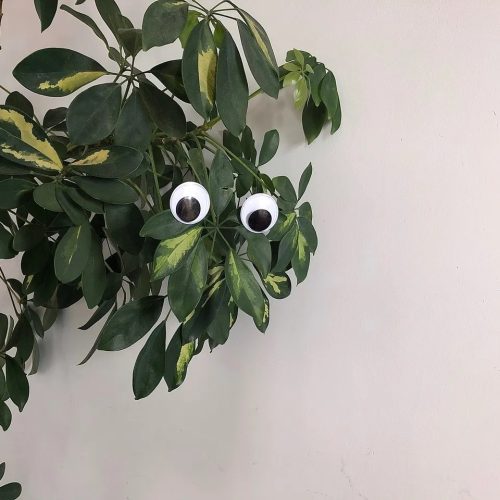Can Plants See? Do they have a sense to look around? Let’s explore the science behind it and unlock this mystery!

The question of whether plants can “see” has long fascinated scientists, gardeners, and nature enthusiasts alike. While plants don’t have eyes or a nervous system to process visual information, they do have an incredible ability to perceive and respond to light. In this article, we’ll delve into the science behind plant perception and answer the question – Can Plants See!
Do plants like music? Find out here
Photoreceptors: The Light-Sensing Molecules
Plants have specialized proteins called photoreceptors that enable them to detect various wavelengths of light. The primary types include:
- Phytochromes: Sensitive to red and far-red light, these photoreceptors are crucial for seed germination and flower development.
- Cryptochromes: These react to blue and ultraviolet-A light and are important for circadian rhythms.
- Phototropins: Also sensitive to blue and UV-A light, these receptors control processes like leaf expansion and stem growth.
Functions of Photoreceptors
Plants may not have eyes, but they do possess a unique ability to “see” their environment through specialized proteins called photoreceptors. These fascinating molecules enable plants to perceive light and adjust their growth patterns, internal clocks, and even defenses accordingly.
Photoreceptors help plants “sense” their environment and make appropriate adjustments for survival. For instance, they can detect the length of daylight to determine the right time for flowering, or sense the direction of light to grow towards it (phototropism).
How Photoreceptors Work
- Absorption and Signal Transduction: Photoreceptors absorb specific wavelengths of light and undergo a conformational change, which initiates a signaling cascade within the cell.
- Gene Activation: The activated photoreceptor interacts with other proteins and molecules to activate or inhibit specific genes, affecting plant growth and behavior.
- Feedback Mechanism: The activities of photoreceptors are often fine-tuned through feedback loops, which help the plant adapt to changing light conditions.
Do Plants Grow at Night? Find Out!
Key Functions of Photoreceptors
- Germination: Phytochromes in seeds detect red light, signaling that it’s an opportune time to start the germination process.
- Flowering Time: Both phytochromes and cryptochromes influence when a plant will flower based on the length of day and night.
- Orientation and Growth: Phototropins help the plant orient its leaves and stems toward the light for maximum photosynthesis.
- Defense: Some photoreceptors are involved in detecting light changes that may indicate an approaching predator or an environmental threat, triggering defensive responses.
- Circadian Rhythms: Cryptochromes help regulate the plant’s internal clock, aligning physiological processes with the day-night cycle.
Spectrum of Light
1. Visible Spectrum and Beyond
Plants are sensitive to a spectrum of light that spans from ultraviolet to far-red. While humans see light in the visible spectrum (approximately 400-700 nm), plants can “see” a broader range.
2. Role in Photosynthesis
Chlorophyll, the green pigment in plants, absorbs light most efficiently in the blue and red regions of the spectrum. The light absorbed is then converted to chemical energy through the process of photosynthesis.
Do Plants Analyze Visual Information

1. Lack of a Nervous System
Plants don’t have a nervous system to process visual information like animals do. Therefore, while they can detect light and respond to it, they don’t “see” in the conventional sense.
2. Complex Responses
Though they can’t analyze visual data, plants engage in complex biochemical reactions to adapt to their environment. For example, they can adjust leaf angles for optimal light capture or grow in a certain direction to avoid shade.
What Do Plants Eat for Food?
Flowering and Atmospheric Analysis

1. Photoperiodism
Plants cannot “analyze” the atmosphere visually to decide when to bloom. However, they do use photoreceptors to sense the length of day and night, known as photoperiodism. Based on this information, certain plants determine the optimal time for flowering.
2. Environmental Cues
Factors such as temperature, soil quality, and humidity also play roles in flowering, but plants don’t analyze these conditions. Rather, they respond to specific biochemical triggers initiated by these environmental factors.
Conclusion
So, can plants “see”? The answer depends on how you define “seeing.” While they don’t have eyes or a brain, plants have an advanced light-sensing system that allows them to adapt and respond to their environment.
Their perception of light is crucial for various life processes, from photosynthesis to growth, but it’s a far cry from the way animals process visual information.


